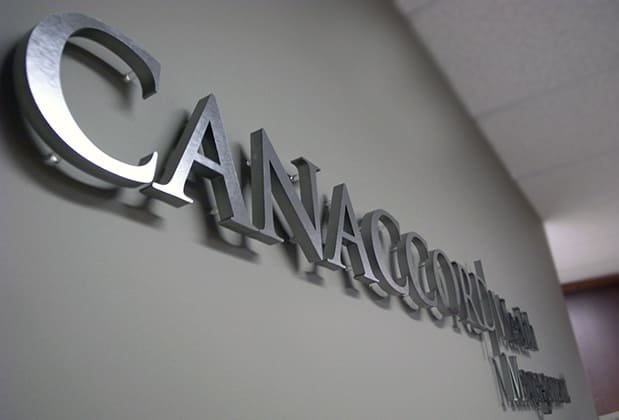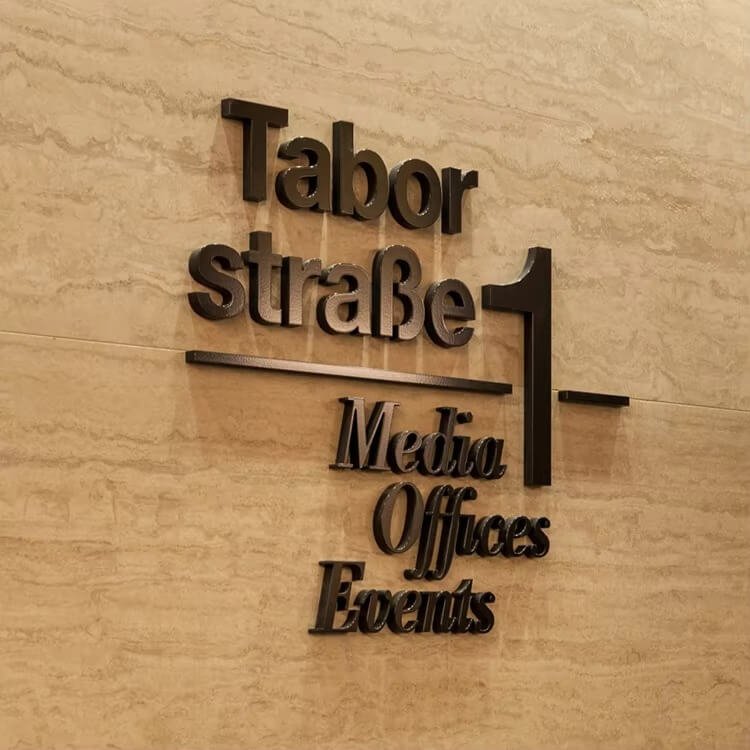Picture this. A family pulls up to your hotel after a long, tiring day of travel. The kids are cranky, the parents are stressed, and all they want is to check in and relax. But… where’s the entrance? Is that the main door or a side door? Where is guest parking? Before they even step inside, a feeling of confusion starts to bubble up. That first impression, shaped by something as simple as a sign, has already set a negative tone for their entire stay.
It sounds dramatic, but it happens all the time! We often forget about the quietest workers at any hotel: the signs. Think of them as your hotel’s silent tour guides. They greet guests, point them in the right direction, keep them safe, and even tell your brand’s story without saying a word. They are so much more than just directions; they are a vital part of what makes a hotel feel welcoming, professional, and easy to love.
This huge guide is your one-stop shop for everything you need to know about hotel signage. We’re going to explore why signs are so incredibly important, look at every single type of sign you could possibly need, and dive into the fun stuff like design and materials. We’ll also walk you through the super-important legal rules (like ADA compliance) in a way that’s easy to understand. By the end, you’ll have a complete plan for making your hotel’s signs work for you, not against you.
Table of Contents
The Foundation – Why is Hotel Signage So Important?
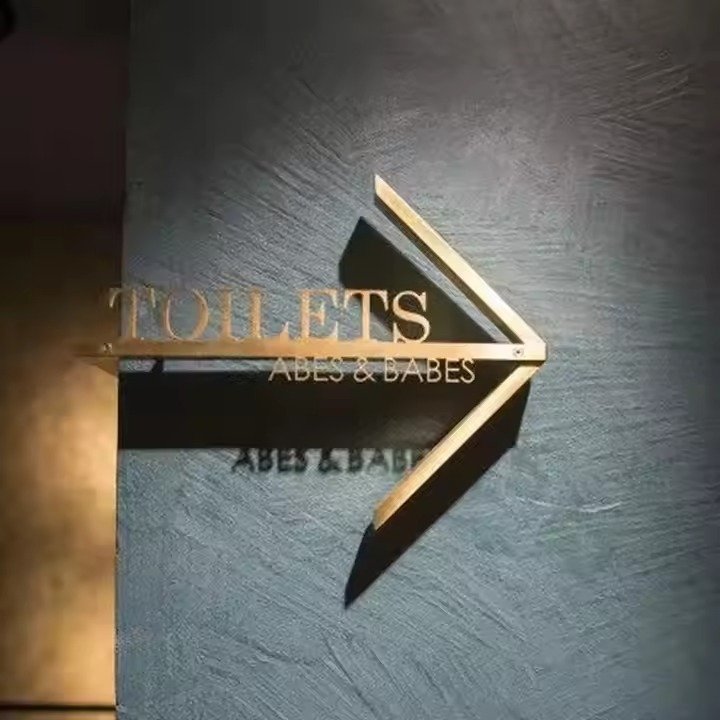
Before we get into the nuts and bolts of sign types and rules, let’s talk about the big “why.” Why should you care so much about signs? It turns out they do a lot more than just point to the pool. They have a huge impact on how guests feel, what they think about your brand, and even how much money they spend.
How Does Great Hotel Signage Make Guests Happier?
A happy guest is a guest who comes back. And happiness often starts with feeling comfortable and stress-free. Good signage is key to creating that feeling.
The First Impression: It Starts Before the Door Opens
Your hotel’s main sign is like a handshake. It’s the very first thing a guest sees. What kind of handshake are you giving? A big, bright, clean sign says, “Welcome! We’re professional, and we care about details.” A faded, cracked, or poorly lit sign whispers, “We might have let other things slide, too.” Studies have shown that most people believe the quality of a business’s sign reflects the quality of its products or services. In a hotel, that’s truer than ever. You want that first “handshake” to be a confident and welcoming one.
Smooth Sailing: Getting Rid of Guest Frustration
Put yourself in your guests’ shoes. They’re in an unfamiliar place. They need to find their way from the parking lot to the lobby, from the lobby to the elevator, and from the elevator to their room. Every time they have to stop and wonder, “Where do I go now?” a little bit of frustration builds. Great wayfinding signs make this journey effortless. They answer questions before the guest even has to ask them. One analysis even found that bad signage was a factor in a huge number of negative online reviews. When guests can easily find the gym, the restaurant, or the conference room, they feel smart and in control, which makes their whole stay better.
Feeling Safe and Sound
This is a big one. Signs that clearly mark emergency exits, fire extinguisher locations, and evacuation routes are not just a legal requirement; they are a powerful message to your guests. They say, “We’ve thought about your safety. You’re in good hands here.” This builds a deep sense of trust and security, allowing guests to truly relax and enjoy their stay.
What Role Do Signs Play in Your Hotel’s Brand?
Your brand is the story you tell about your hotel. Is it a story of luxury? Of family fun? Of modern chic? Your signs are one of the main ways you tell that story.
More Than Directions: Signs as Storytellers
Every sign should feel like it’s part of the same family. That means using your hotel’s logo, colors, and fonts consistently on every single sign. A sign isn’t just a piece of plastic with letters on it; it’s a brand ambassador. The materials you choose also tell a story. A sign made of polished brass and dark wood suggests classic luxury, while one made of sleek acrylic and brushed aluminum feels modern and clean. This consistency creates a strong, unified brand identity.
Creating a Polished and Professional Vibe
When all the signs in your hotel look like they belong together, it creates a seamless and professional atmosphere. It shows that you’ve thought about every detail, which makes the whole property feel more high-end and well-managed. It’s this attention to detail that separates a good hotel from a great one.
Can Hotel Signage Actually Make You More Money?
Yes, it absolutely can! Think of your signs as silent salespeople working for you 24/7.
Pointing the Way to Purchases
Does your hotel have a fantastic restaurant or a relaxing spa? How will guests know if they can’t find it? A beautiful, enticing sign pointing the way can be the nudge a guest needs to book a dinner reservation or a massage. Digital signs in the lobby are even better for this. They can show off mouth-watering pictures of the daily special, advertise a happy hour at the bar, or promote a 2-for-1 spa treatment. This is a direct way to boost sales from the guests you already have.
Encouraging Upgrades and Return Visits
Signage can also plant seeds for future income. A small, elegant sign in the elevator could mention the benefits of your premium suites. A display in the lobby could highlight the perks of joining your hotel’s loyalty program, encouraging guests to book with you directly next time instead of through a third-party site. Every sign is an opportunity to communicate value and drive revenue.
A Complete Guide to Every Type of Hotel Sign You’ll Ever Need
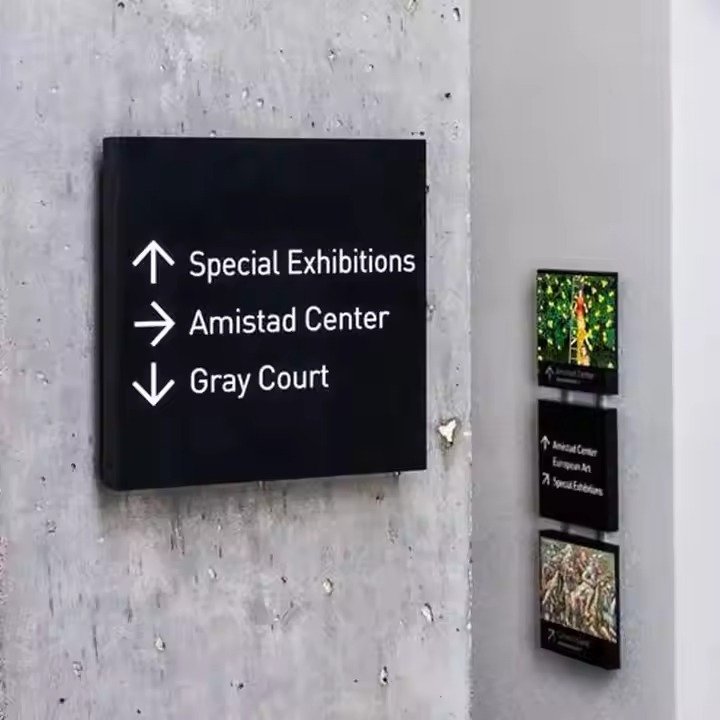
Okay, so we know signs are super important. But what kinds of signs are we actually talking about? Let’s break down all the different types, from the giant sign you see from the highway to the tiny plaque on the bathroom door. We can split them into two main groups: signs for the outside and signs for the inside.
What are the Key Signs for Your Hotel’s Exterior?
These are the signs that welcome the world and guide people to your front door. They need to be big, clear, and tough enough to stand up to the weather.
Identity & “Hero” Signage: Your Big Welcome Mat
Your main exterior sign is your beacon. It’s what weary travelers are looking for. It needs to be visible, clear, and reflect the quality of the stay that awaits them inside.
- Pylon & Monument Signs: These are the big, freestanding signs you often see at the entrance to a hotel’s driveway. A monument sign is usually lower to the ground and made of materials that match the building, like brick or stone. A pylon sign is the very tall one you can see from far away. Both act as a landmark for your property.
- Channel Letter Signs: These are the individual 3D letters, often lit from the inside, that are mounted high up on the building’s facade. Think of the giant Marriott or Hilton signs on top of skyscrapers. They act as a homing beacon, visible from all over the city.
- Blade Signs: These are the signs that stick out from the side of a building, perpendicular to the wall. They’re great for hotels in busy downtown areas or historic districts where guests might be walking by on the sidewalk.
Directional & Wayfinding Signs
Once guests are on your property, they still need guidance. These signs help them get around outside. This includes clear signs for:
- Main Entrance & Reception
- Guest Parking / Valet
- Conference Center Entrance
- Restaurant or other external amenity entrances
- Exit
What are the Essential Signs for Inside Your Hotel?
Once guests are inside, a whole new set of signs takes over. These signs help them navigate the interior spaces, find their rooms, and feel comfortable.
Lobby & Reception Signage: Setting the Stage
The lobby is where the indoor guest journey begins. The signs here need to be both beautiful and helpful.
- Lobby Logo Sign: This is the statement piece, usually located right behind the front desk. It’s a major branding moment.
- Lobby Directories: These are maps that show guests where to find key areas. They can be elegant static signs or modern digital touchscreens. They should point the way to restrooms, elevators, restaurants, and conference floors.
- Movable Signs: These are handy for providing temporary information, like welcoming a specific conference group or pointing the way to a wedding reception.
Interior Wayfinding Systems: Your Invisible Guide
This is the network of signs that guides guests through hallways and between floors. When it’s done well, guests don’t even notice it; they just magically know where to go.
- Directional Signs: These signs, often mounted on walls or hanging from the ceiling, use arrows to point toward different wings of the hotel, room number ranges, and amenities like the pool or fitness center.
- Overhead Signs: For large, open areas or very long hallways, signs that hang from the ceiling are easier to see over a crowd.
- Floor Identification Signs: These are crucial! Placed right outside elevators and in stairwells, they clearly state the floor number and often list the key rooms or amenities found on that floor.
Room & Identification Signage: The Final Stop
- Room Number Signs: This is one of the most important signs in the whole hotel. It needs to be clear, easy to read, and—as we’ll see later—must follow very specific rules to be accessible for all guests.
- Amenity Signs: These are the nameplates for specific rooms, like “Fitness Center,” “Ice/Vending,” “Conference Room A,” or “Spa.” They identify the space clearly.
Safety & Regulatory Signage: The Must-Haves
These signs are not optional; they are required by law to keep your guests safe.
- Exit Signs: Must be lit up and placed above all exit doors and along all exit routes.
- Evacuation Maps: A map showing emergency exit routes must be posted on every floor, usually near the elevators where everyone can see it.
- Informational Signs: This category includes “No Smoking” signs, “Pool Rules” signs, and signs marking the location of fire extinguishers.
Digital vs. Static Signs: What’s the Best Choice?
Hotels use a mix of both traditional (static) and modern (digital) signs. Neither is better than the other; they’re just good for different jobs.
Static signs are your classic, unchanging signs. They are perfect for information that never changes, like room numbers, exit signs, and your main brand logo. They are reliable, durable, and generally more affordable upfront.
Digital signs are like TVs that you can program to show anything you want. They are perfect for information that changes often, like daily event schedules, restaurant specials, or personalized welcome messages for groups. They are attention-grabbing and incredibly flexible.
Here’s a quick comparison to help you decide:
| Feature | Static Signage | Digital Signage |
|---|---|---|
| Best For | Permanent info (Room Numbers, Exits, Logos) | Changing info (Menus, Events, Promotions) |
| Flexibility | Low (Cannot be changed) | High (Can be updated instantly) |
| Upfront Cost | Lower | Higher |
| Maintenance | Low (Just needs cleaning) | Higher (Requires software and power) |
The Art and Science of Hotel Signage Design & Materials
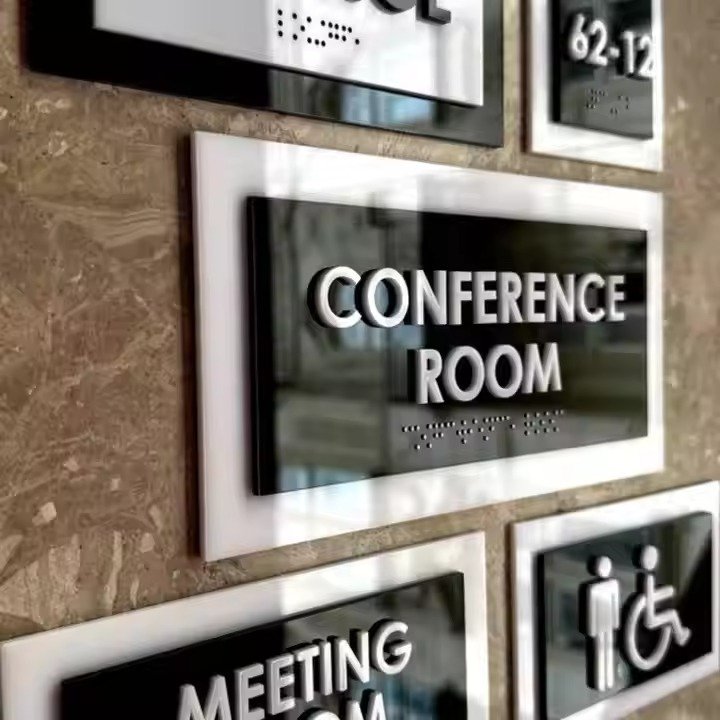
Now for the fun part! Let’s talk about how to make your signs look great while still doing their job perfectly. The design of your signs—the colors, fonts, and materials you choose—is a huge part of your hotel’s personality.
What Design Rules Should You Follow for Your Hotel Signs?
Good design isn’t just about looking pretty. It’s about clear communication. Here are the key principles to keep in mind.
Brand Consistency is Everything
We’ve said it before, but it’s worth saying again: every sign in your hotel should look like it came from the same family. This means using your official brand colors, fonts, and logo in the same way on every sign. Avoid the temptation to let different managers or departments create their own “one-off” signs. When everything matches, it creates a powerful, professional, and unified brand experience.
Readability is Job Number One
A beautiful sign that no one can read is useless. The most important job of any sign is to be clear and easy to understand at a glance.
- Font Choice: Stick to simple, clean fonts. Fonts that are known as “sans-serif” (like Arial or Helvetica) are usually the easiest to read. Avoid fancy script, cursive, or overly decorative fonts for important information.
- Letter Size: How big should the letters be? A good rule of thumb is to have one inch of letter height for every 10 to 12 feet of viewing distance. So, a sign that needs to be read from 40 feet away should have letters that are about 4 inches tall.
- Color & Contrast: This is super important. There needs to be a big difference between the color of the letters and the color of the background. Think dark letters on a light background, or light letters on a dark background. Low contrast (like yellow letters on a white background) is very hard to read, especially for people with vision problems.
- The Finish: Have you ever tried to read a sign that has a bright glare on it from a window or a light? It’s almost impossible. That’s why your signs should have a matte or non-glare finish. This prevents reflections and makes the sign readable from any angle.
How Do You Pick the Right Materials for Your Signs?
The material a sign is made from affects how it looks, how long it lasts, and the message it sends about your brand. Here are some of the most popular choices:
| Material | Looks & Feels | Best For | Durability & Maintenance |
|---|---|---|---|
| Metal (Aluminum, Steel, Brass) | Professional, strong, timeless, high-end. | Exterior signs, lobby logos, important plaques. | Very durable and weather-resistant. Low maintenance. |
| Acrylic | Modern, clean, versatile. Can look like glass. | Interior wayfinding, room numbers, dimensional letters. | Durable and lightweight, but can scratch. Easy to clean. |
| Wood | Warm, rustic, elegant, natural. | Boutique hotels, spas, rustic resorts. | Less weather-resistant than metal. May require more maintenance. |
What are the Best Ways to Light Up Your Signs?
Lighting can take a sign from good to great, especially for your main exterior signs that need to be seen at night.
- Backlit (or Halo-Lit) Signs: This is a very popular and elegant option. The light source is behind the letters, making them glow around the edges. It creates a soft, sophisticated “halo” effect.
- LED Signs: This is the modern standard for most illuminated signs. LEDs are super bright, use very little energy, and last for a very long time. They can be used to light up signs from the inside or the back.
- Neon Signs: For a classic, retro, or fun vibe, nothing beats neon. It’s great for bar signs or unique branding moments.
The Non-Negotiables: A Deep Dive into ADA Signage Rules
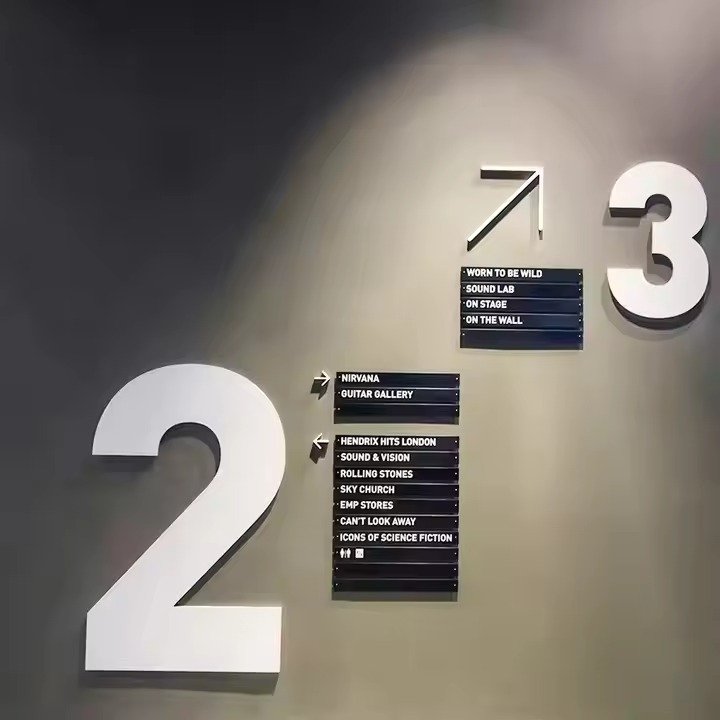
Okay, this is probably the most important section in this entire guide. It can seem a little technical, but we’re going to break it down into simple, easy-to-understand steps. Following these rules isn’t just a good idea; it’s the law. And more importantly, it’s about making your hotel truly welcoming to every single guest.
What is ADA Signage and Why is it So Important?
The Americans with Disabilities Act (ADA) is a federal law that was passed to make sure people with disabilities have the same opportunities as everyone else. A big part of this law deals with making buildings accessible. For hotels, this means having signs that can be read by guests who are blind or have low vision.
Failing to follow ADA rules can lead to serious legal trouble, including lawsuits and big fines. But the real reason to do it is that it’s the right thing to do. It shows you care about all your guests and want to provide a safe and equal experience for everyone.
Which Signs in Your Hotel Must Follow ADA Rules?
This is a key question. The rule is simple: any sign that identifies a permanent room or space must be ADA-compliant. What does that mean? Here’s a list:
- Restroom Signs
- Room Number and Room Name Signs (like “Westchester Ballroom”)
- Floor Number Signs (in stairwells and by elevators)
- Stairwell Signs
- Exit Signs
- Signs for specific permanent rooms, like “Fitness Center,” “Pool,” or “Office.”
What signs do NOT need to follow these specific tactile rules? Things like marketing signs, temporary signs for an event, or big overhead directional signs. (Although all signs should still be easy to see and read!).
What are the Key Rules for an ADA-Compliant Sign?
An ADA sign has special features that allow it to be read by touch. Let’s look at each feature one by one.
1. Raised Letters (Tactile Characters)
The letters and numbers on the sign must be raised up from the surface by at least 1/32 of an inch. This is so a person can feel the shape of each letter with their fingertips. These letters must also be:
- ALL CAPS. All tactile text must be in uppercase.
- A simple, sans-serif font. No fancy or cursive fonts.
- Not too skinny or too fat. The font must have a normal weight.
2. Letter Size and Spacing
The raised letters must be between 5/8 of an inch and 2 inches tall. This size is big enough to feel easily but not so big that it’s hard to read a whole word. There also needs to be enough space between the letters so they don’t feel jumbled together.
3. Braille
Every ADA sign must have Braille. Braille is a system of raised dots that blind people use to read.
- It must be Grade 2 Braille, which is a shorthand version.
- The dots must be domed or rounded, not flat.
- The Braille must be placed directly below the raised text. There should be at least 3/8 of an inch of clear space between the bottom of the raised letters and the top of the Braille dots.
4. Pictures & Symbols (Pictograms)
If you use a symbol, like the classic man/woman symbols for a restroom, it must be in its own 6-inch high space, and the text describing it (“RESTROOM”) must be below it.
5. Finish and Contrast
Just like we talked about in the design section, all ADA signs must have a non-glare, matte finish. They also must have high contrast between the letters and the background.
Where and How Do You Install an ADA Sign?
Making a perfect ADA sign is only half the battle. You have to install it in the right place, too!
Mounting Height
This is very specific. The sign must be mounted so that the raised letters are between 48 inches and 60 inches from the floor. This height range ensures that the sign can be reached and read by someone standing up or someone in a wheelchair.
Mounting Location
This is the rule most people get wrong. The sign should be mounted on the wall on the latch side of the door (the side with the handle). Do not mount the sign on the door itself! Why? Because if someone is reading the sign by touch and another person opens the door, the first person could get hit. There also needs to be a clear 18-inch by 18-inch space on the floor in front of the sign, so a person in a wheelchair can get close enough to read it.
Here is a table summarizing the key ADA requirements for quick reference:
| ADA Requirement | Specification | Why It’s Important |
|---|---|---|
| Tactile Text | Raised 1/32″, ALL CAPS, Sans-Serif Font | Allows reading by touch for blind individuals. |
| Braille | Grade 2, Domed Dots, Below Raised Text | Provides a standard reading method for Braille users. |
| Contrast & Finish | High Contrast (Dark/Light), Matte/Non-Glare | Helps people with low vision read the sign easily. |
| Mounting Height | Between 48″ and 60″ from the floor | Ensures the sign is within reach for all users. |
| Mounting Location | On the wall, on the latch side of the door | For safety and to prevent obstruction by the swinging door. |
The Strategic Blueprint – Planning and Executing Your Hotel Signage System
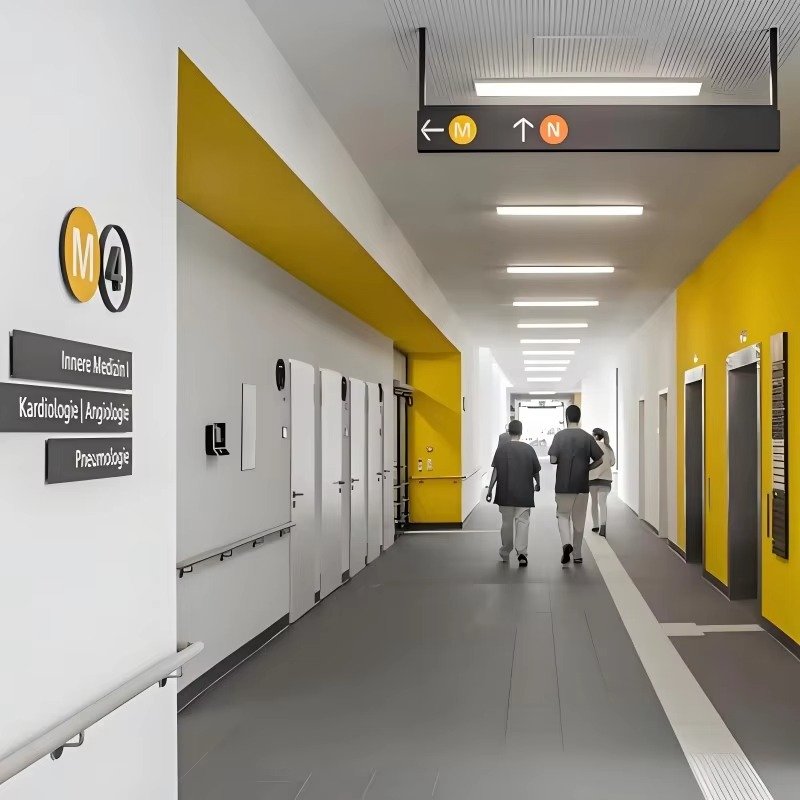
Now that you know all about the what, why, and how of hotel signs, it’s time to put it all together. A successful signage system doesn’t happen by accident. It requires a smart plan. This section is for the hotel managers, developers, and owners who need to turn these ideas into reality.
How Do You Plan a Hotel Signage System from the Ground Up?
A great signage plan follows a few logical steps. Think of it like building a house: you need a blueprint before you start hammering.
- Stage 1: The Study. Before you order a single sign, you need to do your homework. Walk through your property from the perspective of a first-time guest. Where do they get confused? Where do they need information? Analyze the flow of traffic for both people and cars. This initial study will tell you exactly what signs you need and where they should go.
- Stage 2: The Specification & Design. Now you can create a master plan, sometimes called a “signage schedule.” This document lists every sign, its location, its message, its size, and its design. This is where you work with designers to make sure everything is on-brand and all the ADA rules are being followed.
- Stage 3: The Fabrication. This is where the signs are actually made. It’s important to choose a reputable sign manufacturer who understands the unique needs of hotels and has experience with ADA compliance. Working with a factory-direct source can often give you better quality control and pricing.
- Stage 4: The Installation. The final step is putting the signs up. A professional installation team will make sure every sign is mounted securely and in the exact right spot according to your plan and ADA guidelines. They will also need to coordinate with other contractors if signs need to be installed on tricky surfaces like glass walls or require electrical work.
What are the Common Mistakes in Hotel Signage (And How to Avoid Them)?
Many hotels make the same big mistake: they treat signage as an afterthought. They spend millions on renovations—new furniture, new carpets, new technology—and then at the last minute, they remember they need signs.
This is a recipe for disaster. Rushing your signage leads to poor design, budget overruns, and, worst of all, compliance issues that can delay your opening or lead to fines. One hotel that was rebranding to a major national franchise left signage until the end. They were already behind schedule when they discovered the new brand’s sign requirements clashed with local city rules. This led to costly redesigns and delays, all of which could have been avoided.
The solution is simple: bring your signage partner in early. A good sign company does more than just print signs. They are experts who can help you plan, design, and get the necessary permits from the very beginning of your project. This saves you time, money, and a whole lot of headaches.
New Buildings vs. Existing Hotels: What are the Rules?
- For New Buildings and Major Renovations: If you are building a new hotel or doing a major renovation, you must follow all the current 2010 ADA Standards for your signage. There are no exceptions.
- For Existing Hotels (with no renovations): Even if you’re not renovating, the law says you are still expected to remove accessibility barriers when it is “readily achievable” (meaning, easy and not too expensive to do). Updating your signs to be ADA-compliant is considered one of the easiest and most affordable fixes you can make. It’s a smart upgrade that makes your hotel more accessible and protects you from potential legal issues.
The Future is Now – Modern Trends & Inspiring Examples
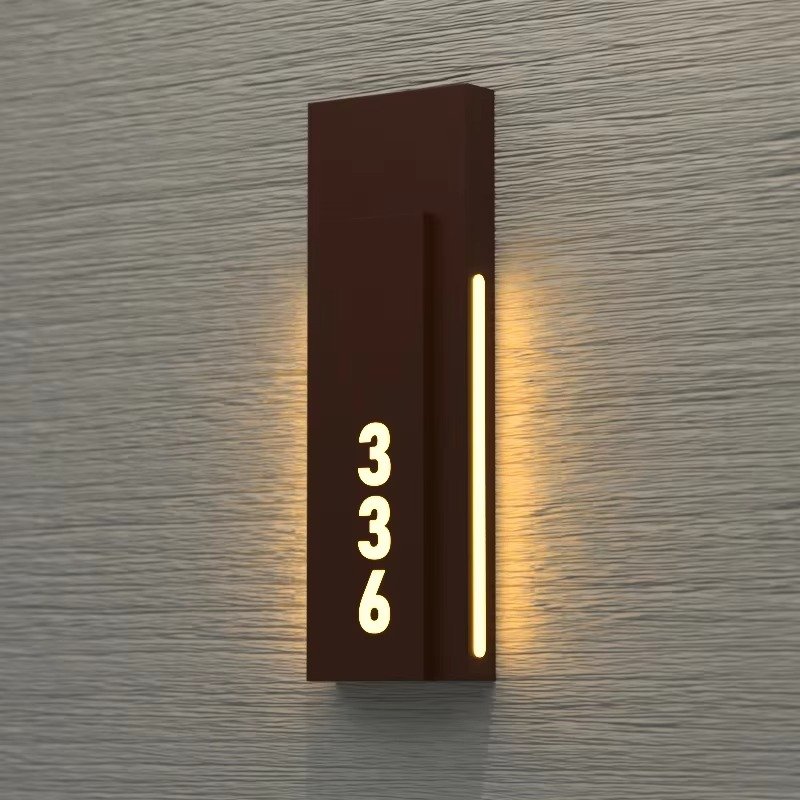
The world of hotel signage is always evolving. Let’s look at a couple of modern trends and see some real-world examples of hotels that are getting it right.
What are the Latest Trends in Hotel Signage?
1. Sustainable and Eco-Friendly Signs
More and more guests are choosing hotels that care about the environment. You can show your commitment to sustainability through your signs! Many sign companies now offer eco-friendly materials like:
- Recycled Aluminum: Just as durable and beautiful as new aluminum, but much better for the planet.
- Greencast Acrylic: A type of acrylic made from 100% recycled materials.
- Using Low-Energy LED Lighting: This is a simple switch that significantly reduces your hotel’s energy consumption.
Choosing sustainable signs is a great way to tell a positive story about your brand.
2. Smarter Digital Integration
We’ve already talked about digital signs, but the future is about making them even smarter. Imagine a digital sign in your lobby that is connected to your hotel’s management system. It could automatically update to show which conference rooms are in use, display a personalized welcome message when a specific guest checks in, or even show real-time flight information from the local airport. This level of integration makes the guest experience incredibly seamless and helpful.
Case Studies: Hotel Signage Done Right
Sometimes the best way to learn is to see how others have succeeded. Here are a few examples of amazing hotel signage projects.
| Hotel Example | What They Did Right | The Key Takeaway |
|---|---|---|
| The Luxury Rebrand (Electra Palace) | For their major renovation, they used high-end materials like perforated aluminum with custom black and gold paint to create signs that felt like part of the luxurious decor. The whole process was meticulously planned. | For a luxury brand, the quality and material of your signs must match the five-star experience you offer. |
| The Waterfront Beacon (Buffalo Grand Hotel) | To stand out on a busy waterfront, they used a huge, classic sign with marquis-style lighting. It created a “starstruck” moment for arriving guests and became a recognizable landmark. | Your main exterior sign can be a powerful marketing tool that draws people in from afar. |
| The Thematic Experience (LEGOLAND Beach Retreat) | They didn’t just use standard signs. Their wayfinding totems were designed to look like giant, stacked LEGO bricks, with signs featuring LEGO characters. It made navigating the resort fun and part of the theme. | Signage can be deeply integrated into your brand’s unique personality, turning a simple direction into a memorable experience. |
Conclusion: Your Signs are Speaking. What are They Saying?
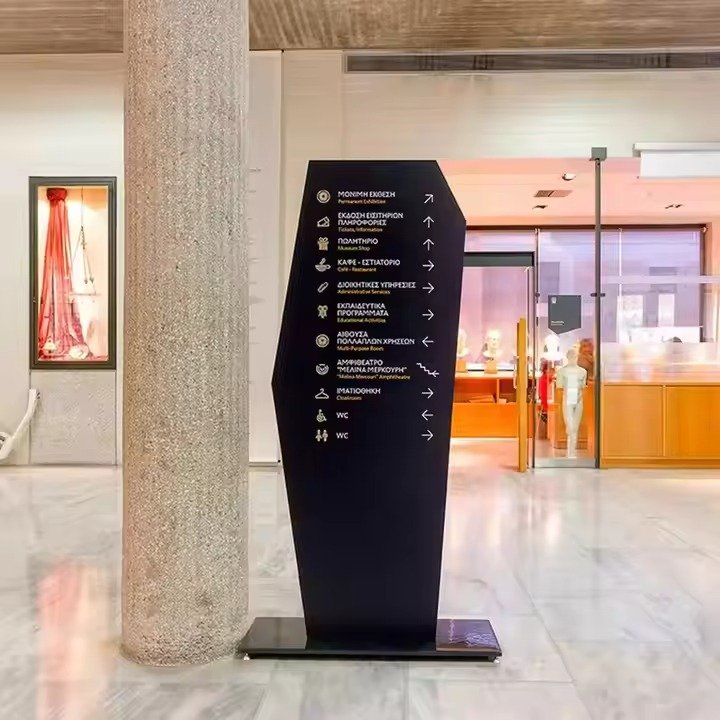
We’ve covered a lot of ground! From the first welcome sign a guest sees to the final exit sign they pass on their way out, every sign in your hotel is telling a story. It’s a story about your brand, your attention to detail, and your commitment to your guests’ comfort and safety.
Hotel signage is a powerful mix of art and science. It’s about beautiful branding, but it’s also about clear navigation. It’s about creating a welcoming atmosphere, but it’s also about following critical legal rules. By thinking of your signs not as an expense, but as a crucial investment in your property’s success, you can create a seamless, intuitive, and positive experience for every single person who walks through your doors.
With the knowledge from this guide, you are now ready to make smart, informed decisions that will transform your property. You can now look at your signs and know exactly what story they’re telling.
Get a Free Hotel Signage Consultation & Quote!
Frequently Asked Questions About Hotel Signage
- Why is signage so important in a hotel?
- Signage is crucial because it enhances the guest experience by making navigation easy, reinforces your brand’s identity, ensures guest safety, and helps you comply with legal requirements like the ADA. A good signage system makes a hotel feel professional, welcoming, and stress-free.
- What are the most common types of hotel signs?
- The most common types include large exterior identity signs (like pylon or channel letter signs), interior and exterior wayfinding signs to guide guests, lobby directories, ADA-compliant room number signs, and safety signs (like exits and evacuation maps).
- Do all hotel signs need to have Braille?
- No, not all of them. Only signs that identify a permanent room or space (like restrooms, room numbers, and stairwells) are required by the ADA to have tactile letters and Braille. Marketing signs or temporary signs do not.
- What is the difference between wayfinding and directional signage?
- They are very similar! “Wayfinding” is the overall system of helping people navigate a space. “Directional signage” is a specific tool within that system—the signs with arrows that point you in the right direction.
- How can I make my hotel signage more sustainable?
- You can choose signs made from recycled materials like aluminum or acrylic, use energy-efficient LED lighting, and partner with a local manufacturer to reduce shipping. This shows guests you care about the environment.
- How often should I check or maintain my hotel signs?
- You should regularly clean your signs and inspect them for any damage, fading, or wear and tear, especially exterior signs. For illuminated signs, you should also check that all the lights are working. A regular walk-through every few months is a good practice.




